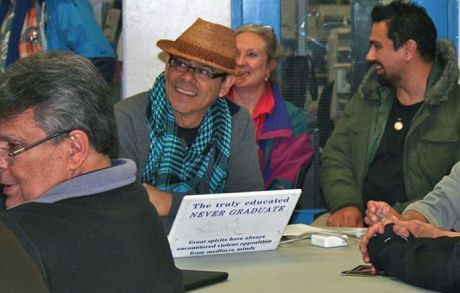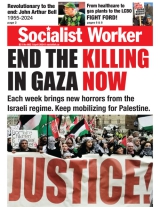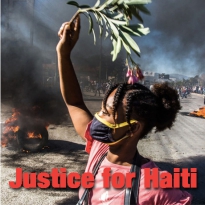Interviews
You are here
Interview: working against colonialism in Vancouver

July 28, 2015
Bradley Hughes talked to Scott Clark, a Salish activist in Vancouver, who is the Executive Director of Aboriginal Life In Vancouver Enhancement – ALIVE about his work.
“It's about assimilating non-Aboriginal people into the Aboriginal world view,” is how Scott Clark described his approach to activism and reconciliation.
The problems that colonization has created for Aboriginal people who live in what is now Vancouver are neither hidden nor undocumented. For example, Mary-Ellen Turpel – Lafond, B.C.’s first Representative for Children and Youth has been documenting the problems of the Ministry of Children and Family Development (MCFD) since she was first appointed in 2004. Her reports document the indifference the Ministry, child welfare workers, school officials, medical professionals and police have towards Aboriginal youth. Her office has produced 17 reports on Aboriginal youth in BC dating back to 2006. Her recommendations to the BC government regarding services for Aboriginal youth and children have been largely ignored. The title of her May 2015 report looking into the life and drug overdose death at age 19 of an Aboriginal girl in Vancouver says it all, Paige’s Story: Abuse, Indifference and a Young Life Discarded.
ALIVE uses “a place-based strategy . . . to create avenues for Aboriginal citizens to have meaningful impacts in their communities and to negotiate their role in the urban 'place' on their own terms.”
Place-based strategy
Scott explained to me that a place-based strategy is the opposite of what the traditional NGO's are doing. The traditional NGO's work on building up a program for their intended “clients” (a term Scott detests) without involving those people. Once the funding is gone, the program disappears leaving nothing behind. Along the way, there is little or no measurement of results. In addition, as Scott points out, the location of many services for urban Aboriginals creates a “pipeline to the downtown East side,” Canada's poorest neighbourhood.
The place-based strategy is an “empowerment model,” where people are given a chance to organize themselves in their own neighbourhoods to get the services they need for success from “pre-natal to post-secondary.” Taking this holistic approach, Scott points out that the “health of a community impacts the health of individuals. We have to look at the social, economic, and environmental variables that harm or help vulnerable peoples.” A place-based approach looks at “what is here, what assets, what services, and develops a strategic approach. We identify what the needs are and go after them.” “If we can do that in Canada's most impoverished urban area, we can do this nation wide.”
I asked Scott how this place-based strategy for building community and community services was related to the work of earlier activists like the Black Panthers. “It's exactly like that. It goes back to the Black Panthers, to Saul Alinsky, to Marx. It's based on the social, environmental and economic interconnectedness of healthy and unhealthy communities.”
Midway through our interview at a coffee shop on Commercial Drive, Scott recognized a woman passing by. She shows the success of ALIVE's approach. A few years ago, they were able to get her help with childcare and housing. She got involved in the Ray-Cam Co-operative Centre and ALIVE. She was able to find work and move out of the downtown east side and enroll in post-secondary education. However, in her new neighbourhood she can't afford the community services offered at the local community centre where children “play if you can pay.” There is a subsidy program for the centre's services, but they don't publicize it.
Scott told me about another success of this strategy. A developer was planning on building an apartment building across the street from the Ray-Cam Cooperative Centre. Activists from ALIVE and the community centre organized a town hall meeting with the developer and got 150 people out to it. Through the discussion, they got the plans changed from single room occupancy units to family units. They also got an agreement to employ 150 people from the neighbourhood, to have the developer purchase local goods and services, and employ local artists. This way some of the money stays in the neighbourhood.
On the subject of reconciliation Scott believes that “people feel so isolated and powerless. They don't know how to begin to engage in their communities…I look at reconciliation as a big concept, we all can do something in a coffee shop, in the business improvement associations, in our community centres, in transit and so on.”
Scott couples revolutionary methods with clear goals in the fight against the wreckage racism, colonialism and neoliberalism produces. For every 10 Aboriginal people who are pushed out of the education system, if he can help two find the support they need to make it to university, “then I will have done my job.” “My spot in this moment of struggle: I can't change Canada, this province or this city, but I might be able to change something in my community”
This article should be read alongside of Reconciliation in action
Section:










